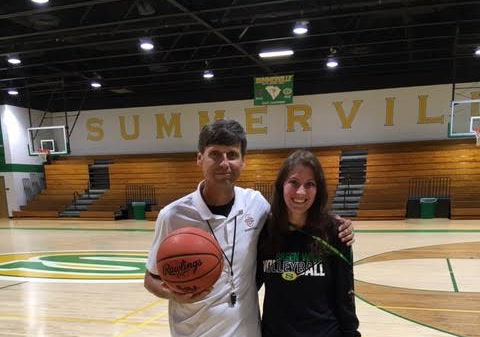Educator. Athlete. Coach
LATEST PROJECTS
Welcome to my Master of Arts in Education Showcase! As you scroll through this page, you will find artifacts of my work over this past year in the MAED program. During this program, I earned a graduate certificate in Sport Coaching and Leadership. The artifacts below showcase the skills and knowledge I gained throughout my time here. They have helped to shape and understand my coaching philosophies and leadership abilities. Each topic extended my knowledge of coaching and teaching and can be applied daily. Throughout the MAED program I have grown as a sport coaching leader and an education professional, explored passions of my own, and created innovative practice plans to use with my team and focus on what it means to be a leader in the field of education. Please click on the buttons to see the full artifact.

Learning to Pass
One of the most important skills in volleyball is being able to forearm pass. It is one of the key factors in being a successful team. In this paper, I researched and developed my understanding of the constraints led approach and how to best coach my athletes for ultimate success. This artifact displays this acquisition of knowledge and skills to help my players be more successful and also help my team be successful.

Safety of Athletes
Every coach has to be CPR, AED and First Aid trained before they can start their job. Is that enough though? In my Safety of Athletes course that I took I developed the skills and knowledge to be able to diagnose, treat, and prevent injuries and illnesses. This is an extremely important set of skills that all coaches should have. We are not medical professionals, but with how common injuries are in sport we should have a solid understanding of how to best advise our athletes in how to prevent or treat their injuries. For one of my courses, I was able to work with the athletic trainer and my school to develop an Emergency Action Plan in case we have serious injury or illness. I also analyzed the ankle sprain, which is the most common injury in volleyball and therefore an important set of knowledge that I need. These two artifacts showcase my skills in injury prevention.
How To Communicate With Athletes
Communication is key. Communication between the athlete and the coach is very important when they are developing. Athletes need to also have a say in practice or game strategy. They need to know how to communicate with the coach as much as the coach does with the athlete. It is also important for the coach to know how to communicate. The Grow Model of Questioning is a method that coaches can use to speak with their athletes to make sure that the athlete is doing most of the talking. This is showcased above! It is also important for coaches to understand how their behaviors effect their athletes on and off the court. I was able to observe a coach and how their behaviors effected athletes during practice. This allowed me to make sure I made adjustments based on what I observed and analyzed.
Mental Toughness
As a coach or a teacher, it is important to understand that if you are not coaching the elite college or professional athletes, you are working with young children. These younger age groups that most coaches work with tend to be in the early stages of developing their emotions and attitudes. One of the most common issues that coaches run into is the attitudes of teammates and how to handle them or teach them the proper way to address their emotions. Young athletes do not always understand how to help themselves be mentally tough. This artifact shows the knowledge I have gained on how to help athletes manages stress and anxiety and be mentally tough.
Being a Leader
The MAED program has allowed me to learn new skills on being a leader in education whether it be as a teacher, as a student, or as a future administrator. One of my future goals is to move from the teaching position to an administrative role in the near future. I have worked in two schools with a majority of the student population coming from low income families and a small percentage from wealthy families. In education, one of the largest trainings that is given is on how to diversify your teaching to the population in your classroom. There were two projects in the EAD 822: Engaging Diverse Students and Families that were eye opening and a joy to complete. The first assignment was a racial autobiography where I had the opportunity to analyze myself, my background and my experiences and how they helped build who I am today. The second was a memoir analysis of Kevin Hart, someone who had a different racial background than I. This assignment gave me the opportunity to analyze the relationship between race, ethnicity, culture, class, power, and privilege in another life. This helped me to further my knowledge and develop me skill of being a culturally responsive educator and leader.

